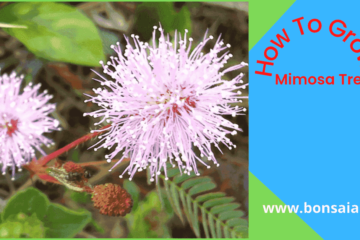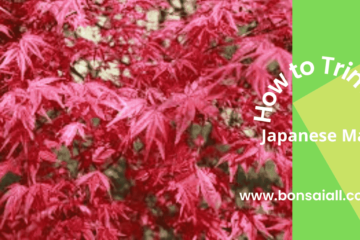When it comes to growing bonsai trees, few species are as prized (or more popular) than the bonsai pine trees There are hundreds of pine or Pinus species that you can choose for bonsai and all offer unique characteristics and timeless beauty.
You can grow pines in a variety of shapes and styles for bonsai, allowing you to experiment with any desired growth style. While some pine species grow twice per year (typically, those from coastal areas of Japan), others offer only one flush of growth (they are more adapted to harsh, sometimes mountainous, conditions).
History of The bonsai pine trees
Content Overview
Pine is the name of the genus of conifers in the family Pinaceae, most of whose members grow as trees and shrubs in mountains with long lives. There are 126 identified pine species, and another 35 are still in the process of being named or researched by the Missouri Botanical Garden and the Royal Botanic Garden, Kew. Under species, there are still many recognized and registered cultivars and varieties of pine.
An evergreen pine tree grows 3–80 m tall, with most species 15–45 m tall. The smallest species are in Siberia, such as pinyon pines and Potosi pinyons, while the tallest is the ponderosa pine of southern Oregon’s Rogue River-Siskiyou National Forest, with a height of 81.79 m.
The distinguishing features of the pine tree are its needle-like leaves and thick, fissured and rough bark. But some species have thin and smooth bark. Pine trees also have good quality wood and are commonly used for construction around the world.
Well, apart from its benefits as a sap and wood producing tree, pine has also been chosen since ancient times as an object of bonsai, especially in Japan. Ancient Japanese people found pine trees from the mountains, brought them home (which had certain criteria) and planted them in shallow containers. The search and collection of pine trees in the mountains is called ‘yamadori’ and is still practiced today.
Not all species of pine can be selected as bonsai objects, bonsai artists only have low-growing pines, growing defects with bent or damaged trunks and unique shapes. Plants with these criteria are transported and brought home for planting and pruning to create beautiful bonsai.
Can any pine tree be bonsai?
One of the most common species used for bonsai is the pine tree. There are over a hundred different types of pine bonsai in the Pinaceae family, meaning there is a bonsai suitable for every level of bonsai enthusiast. It is a hardy and versatile tree that responds well to being pruned and trained in a variety of ways.
How do you start a bonsai pine tree?
Choose a container with adequate drainage for your pine tree. Choose a pot with a height proportional to the diameter of the plant’s trunk and a width that is about two-thirds as wide as the plant is tall.
Make sure the bonsai soil mix you use for pine bonsai has good drainage. Use two parts sandstone or grit, one part pure sphagnum and one part clean pink bark in your bonsai mix. All bonsai pine trees require regular pruning to maintain their health.
Best bonsai pine trees
There are a plenty of pine trees for bonsai. If you want to know which species of pine are widely used as bonsai trees, then you are on the right page because here Tree Names will recommend you 10 best bonsai pine trees that are most commonly used as bonsai. Here is the list:
1.Pinus Mugo/Mountain Pine
Mountain pine originates from the mountain ranges of Central Europe. The species itself is very variable and botanists have subdivided it into a series of subspecies and varieties.
Pinus mugo is very hardy and able to withstand the harshest conditions. They have evolved to tolerate extremely cold winter temperatures and hot, dry summer conditions. Under favorable conditions, they will form dense bushy bushes or small trees but for a poor condition they form bushy, semi-deciduous twisted trees.
The main features that distinguish mountain pine from the more familiar Scots pine (P. sylvestris) are resinous buds and shiny-green to purple bark on young wood. P. mugo produces paired needles, 2–5 cm long that are dark-green and slightly curved. Cones begin as purple flowers that proliferate with new shoots.
2.Pinus thunbergii/ Japanese Black Pine
P. Thunbergia is native to Japan and arguably the classic bonsai pine species. The black pine is a very vigorous tree that is commonly found in parks and ornamental gardens in Japan, typically reaching heights of up to 25 meters. Black pine is very tolerant of poor conditions, surviving in nature on barren, rocky soils.
P. Thunbergii has coarse, dark gray-green needles up to 7–15 cm long, although quite tall, the needles can be reduced in length using bonsai pruning techniques. The bark is purplish-grey and becomes very rough and fissured with age.
White pines are often grafted onto the more vigorous black pine/Pinus thunbergii rootstock to improve vigor and growth rate.
3.Pinus sylvestris/ Scots or Scotch pine
Native to western and northern Europe, the Scots pine is a conical to columnar tree, which often loses its lower branches with maturity and takes on a natural literate form. The needles are twisted, blue-green or yellow-green 5-7 cm long and borne in pairs. Bark becomes shiny, red-brown with age.
Many dwarf cultivars of Pinus sylvestris such as P.s. ‘Beuvronensis’ and P.s. ‘Watery which are both excellent subjects for bonsai.
4.Japanese White Pine (Pinus parviflora)
Japanese white pine, or more commonly known as five-needle pine, is a species of pine in the white pine group, native to Korea and Japan.
It is a tree that is popular as an object apart from the Japanese black pine and is also grown as an ornamental tree in parks and gardens. The cultivars ‘Adcock’s Dwarf’ and ‘Bonnie Bergman’ have won the Royal Horticultural Society’s Award of Garden Merit.
5.Japanese Red Pine (Pinus densiflora)
Japanese red pine or Korean red pine is a tree native to Japan, the Korean peninsula, northeastern China, and southeastern Russia. In winter, these pine leaves turn yellow or brown. The plant prefers full sun to well-drained soil that is also slightly acidic.
In Japan, this tree is known as akamatsu and mematsu. The tree is widely cultivated in Japan for timber production and as an ornamental tree. Japanese red pine plays an important role in classical Japanese gardens as well as bonsai.
6.Limber Pine (Pinus flexilis)
Limber pine or Rocky Mountain white pine is a species of white pine tree native to the mountains of the western United States, Mexico, and Canada. This plant usually lives in steep places in the highlands and grows between rocks.
7. Eastern White Pine (Pinus strobus)
Eastern white pine or Weymouth pine is a pine tree native to eastern North America. The Native American Haudenosaunee named it the “Peace Tree”.
It is known as Weymouth pine in Great Britain after British Royal Navy Captain George Weymouth, who brought its seeds to England from Maine in 1605.
Eastern white pine is cultivated for ornamental plants and live Christmas trees. This species is easy to maintain and fast growing. Several cultivars are used in bonsai such as Pinus strobus ‘Nana’ which only grows to less than 150cm.
8. Chinese White Pine (Pinus armandii)
Chinese white pine or armand pine is a pine species in China, from southwestern Shaanxi to southern Gansu and south to Yunnan, with remote populations in Anhui. It extends to Taiwan and northern Burma at altitudes of 2,000–3,000 m above sea level.
Chinese white pine is also grown as an ornamental tree in parks and gardens in Europe and North America.
9. Blackjack Pine (Pinus ponderosa)
The blackjack pine or ponderosa pine is a very large species of pine tree with a variable habitat in the mountainous regions of western North America. It is the pine species most widely distributed in North America.
Like most western pines, blackjack pine is typically associated with mountainous topography. In New Zealand, ponderosa pines are considered “wild pines” because they have taken over land and prevented native plant species from growing there.
10. Lodgepole Pine (Pinus contorta)
Lodgepole pine or twisted pine is a common tree of western North America. This plant grows naturally in coastal and subalpine mountain forests, but is rarely found in lowland rainforests.
Lodgepole pine can grow into a shrub (1-3 m) or medium-sized tree (45-50 m) with a trunk diameter of up to 2 m.
The lodgepole pine tree is widely planted for forestry or plantations in Norway, Sweden, Ireland and the United Kingdom, and its wood is harvested. Meanwhile, in New Zealand, lodgepole pine is registered with the National Pest Plant Agreement and is prohibited from being sold, commercially reproduced and distributed.
How to choose the right pine trees for Bonsai
Let us know the process of choosing the Best pine for Bonsai.
Corn color
The color of corn indicates the condition of a pine. If it’s in green condition, you can go for that pine tree without a second thought.
Trunk size
The trunk should be of normal size. Also, it must be straight.
Bark color
For white pines, the bark color can be dark and furrowed. The color of the bark can be divided into rectangular plates in the case of red pines.
Branch growth
Healthy bonsai pine trees branches often grow in a spiral around the tree. A new spiral is added per year and is kept in excellent condition.
How to care for a bonsai pine tree
Sunlight
bonsai pine trees need several hours (at least six) of full sun each day. The more light your plant receives, the healthier it will be. Plants that don’t normally get enough light tend to be smaller and more compact. If you notice that your tree’s needles have become leggy or elongated in appearance, it may be time to give your tree more sunlight.
Watering
Well-drained soil is absolutely essential for most bonsai pine trees. Use a soil mix designed for bonsai plants. Keep your plant constantly moist but try not to let it become waterlogged. Water only when the top two inches of soil is dry.
In most cases, growing your bonsai pine trees indoors will be challenging because it will not be exposed to enough moisture. Most people therefore grow their bonsai pine trees outdoors.
These plants are hardy and frost-tolerant, especially if you keep them in a sheltered spot where they will be protected from the worst winter weather. You may find that you need to sprinkle your bonsai pine trees with water occasionally during the dry winter months.
Fertilization
Keep the soil pH for your pine bonsai around 5.5 to 6.5. Fertilize regularly, ideally once each year from early spring to late fall. Avoid fertilizers rich in nitrogen and use more balanced organic fertilizers instead.
Potting and repotting
You should repot your bonsai pine tree every two to five years. This will allow you to refresh the soil and prevent the plant from becoming root-bound. Repot in spring just after buds open.
bonsai pine trees pruning
bonsai pine treesare sometimes considered a more advanced type of bonsai tree – and not ideal for beginners. However, this is a bit of a misconception. Caring for these bonsai can be difficult, but as long as you have a good handle on the pruning and wiring practices you need to follow with this plant, you shouldn’t have too many problems.
Likewise, pruning should be done regularly even when your pine bonsai is relatively young. As these plants first grow vigorously upwards, poorly pruned bonsai become top-heavy and unstable.
Prune in spring or summer, shortening elongated bulbs and removing old needles. If you need to do any heavy pruning on the main branches, wait until fall to do it.
Wiring bonsai pine trees
The wiring will help encourage energy distribution around the plant. You don’t want to do too much wiring at once, as this can cause long-term damage to your plant. Instead, you’ll use it only once per year, usually sometime between early fall and early spring.
Pests and diseases
bonsai pine trees, like most bonsai trees, are vulnerable to various pests and diseases. Watch out for pests like spider mites, aphids, caterpillars and scale. Common diseases include root rot and a variety of other fungal diseases. Fortunately, you can usually control these by following good hydration habits and limiting excess water intake.
Where to buy bonsai pine trees?
bonsai pine trees are some of the most common species you will find in any nursery. However, you shouldn’t settle for just any bonsai pine trees. Make sure the one you select can be trained to grow in a small container and be pruned and wired for bonsai growth.


